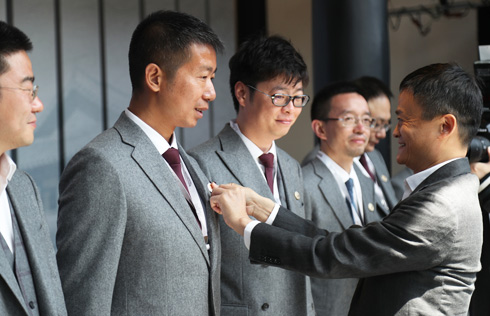China's transition to quality-oriented model
BEIJING -- Following the release of China's weaker -than-expected macroeconomic figures for the first quarter of 2013, the British weekly, The Economist, has, in its April edition, again thrown a spotlight on the transition of China's economic model.
In an article titled "Speed isn't everything," the English-language magazine argued that "China is modernizing, becoming more like a Western economy."
In a more open and interactive global economic environment, any wobble in China's huge economy will inevitably send ripples through the rest of the world.
Among the factors behind China's economic miracles over the past decades were the demographic, resources and capital dividends as well as the "institutional dividend" reaped from the introduction of the contract responsibility system based on household management, through the establishment of a socialist market economy system, to China's entry into the World Trade Organization.
"It is historically unprecedented for a country with a population of 1.3 billion to maintain rapid economic growth for as long as 30 years," said an article published in the World Economic Review, a Japan-based monthly.
"China owes its achievements to economic growth as well as structural reforms," it said.
Economic growth, however, has its price. With the advent of China's economic prosperity, its associated problems, such as "imbalance and unsustainability" in its economic drive, have been discernible.
In its report "China 2030", the World Bank enumerated a series of obstacles, such as an aging population, a decrease in productivity, shrinking profits on infrastructure and other investments, on China's economic development path.
"China has reached a critical stage with its growth -- what economists refer to as the middle-income transition," wrote David Whitford, editor-at-large of Fortune magazine, in an article titled "Where is China headed now?"
For China, transition, which entails discarding the old and ushering in the new, is aimed at a qualitative change in its economic development model.
In his "New Structural Economics," Justin Yifu Lin, former senior vice president and chief economist of the World Bank, stressed the idea that "the structural features of developing economies need to be taken into account in analyzing the process of economic development and the role of state in facilitating the change of structure in developing countries." Michael E. Porter, a leading US scholar on competitive strategy, said a fresh challenge faced by developing countries is how to come out of a loop of over-reliance on cheap labor and natural resources, adding the core competitive advantages rest on creativity instead of natural endowment.
The economic gurus' views correspond to the Chinese government's strategic plans and policies.
An economic work conference held by China's central leadership pointed out that the opportunities China faces are not such traditional ones like integrating itself into the global labor division system, expanding export and speeding up investment.
Rather, new opportunities for China originate from the expansion of domestic demand, improved innovative capacity and transformation of its economic growth model.
For China, a country of huge size, transformation would be a long-time process. The current unbalanced, uncoordinated and unsustainable development remains a big problem. In addition, the contradiction between economic downturn and production overcapacity has aggravated, while problems of rising production cost and weak innovative capabilities continue to exist.
Michael Spencer, a Nobel laureate in economics, noted that China is faced with three special challenges in its development, namely, the huge size of its economy, an export affected by slowdown in developed economies and balancing domestic and global economic agenda.
However, China has been advancing in various fields on various levels. According to statistics, consumption made a bigger contribution than investment to China's growth in the first quarter of 2013.
Even more notable, services have trumped industry's contribution to the GDP in the past three quarters and have almost matched it over the past four -- which has not happened since the 1960s.
The analysis in the Economist noted that consumers and services reinforce each other. Because services are more labor-intensive than industry, their growth boosts wages and household income. Fatter pay-packets then encourage consumption, and consumer spending, in turn, favors services.
China has transformed itself from a global "workshop" to a "congregation zone" and a "markets center". It has become the biggest market for such smartphone producers as Apple and Samsung. Thanks to these, the development of "new industries" based on information and knowledge is picking up speed in China.
China is now at a higher starting point. The comprehensive advantages it has accumulated would lift the world's second largest economy to a higher level.























